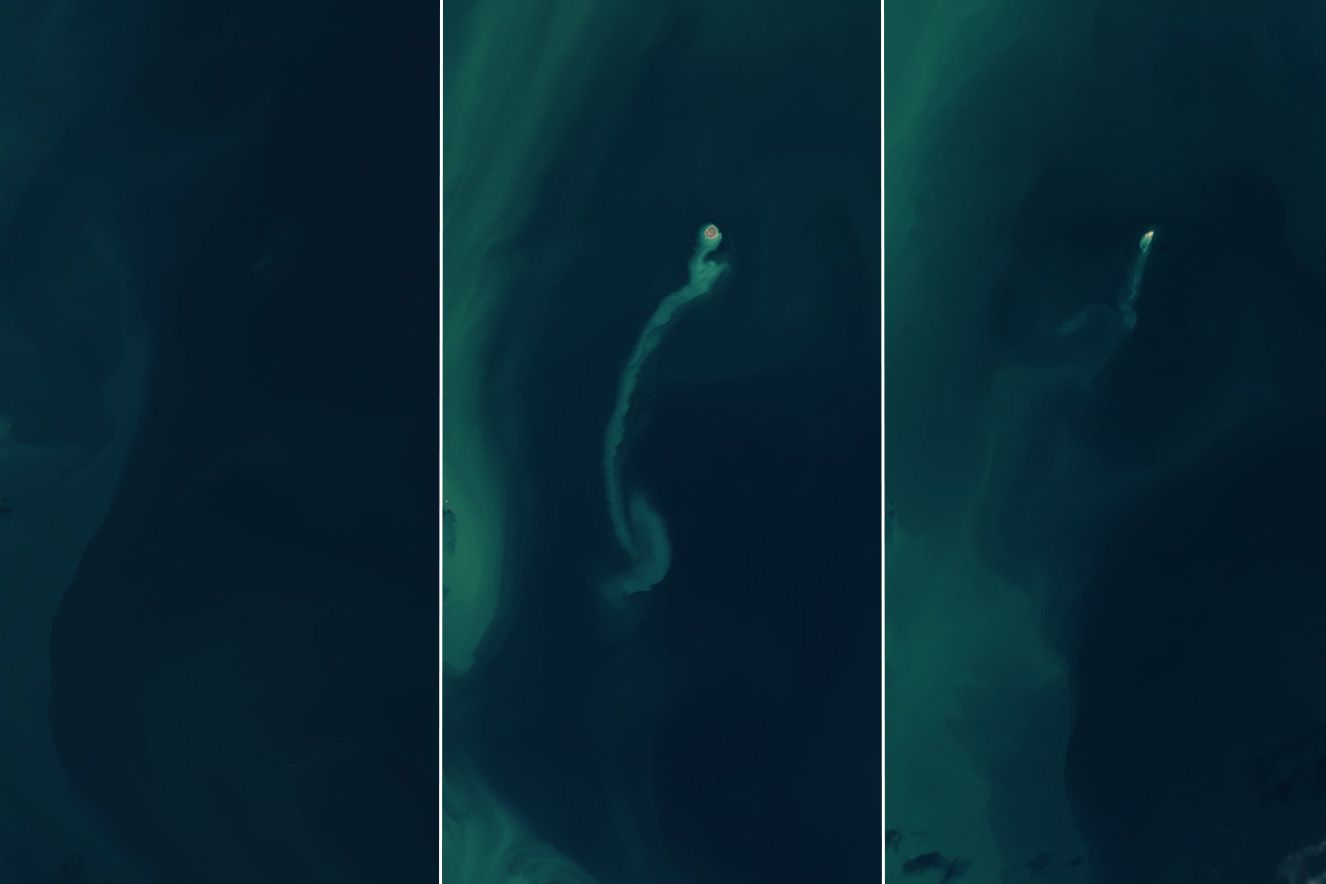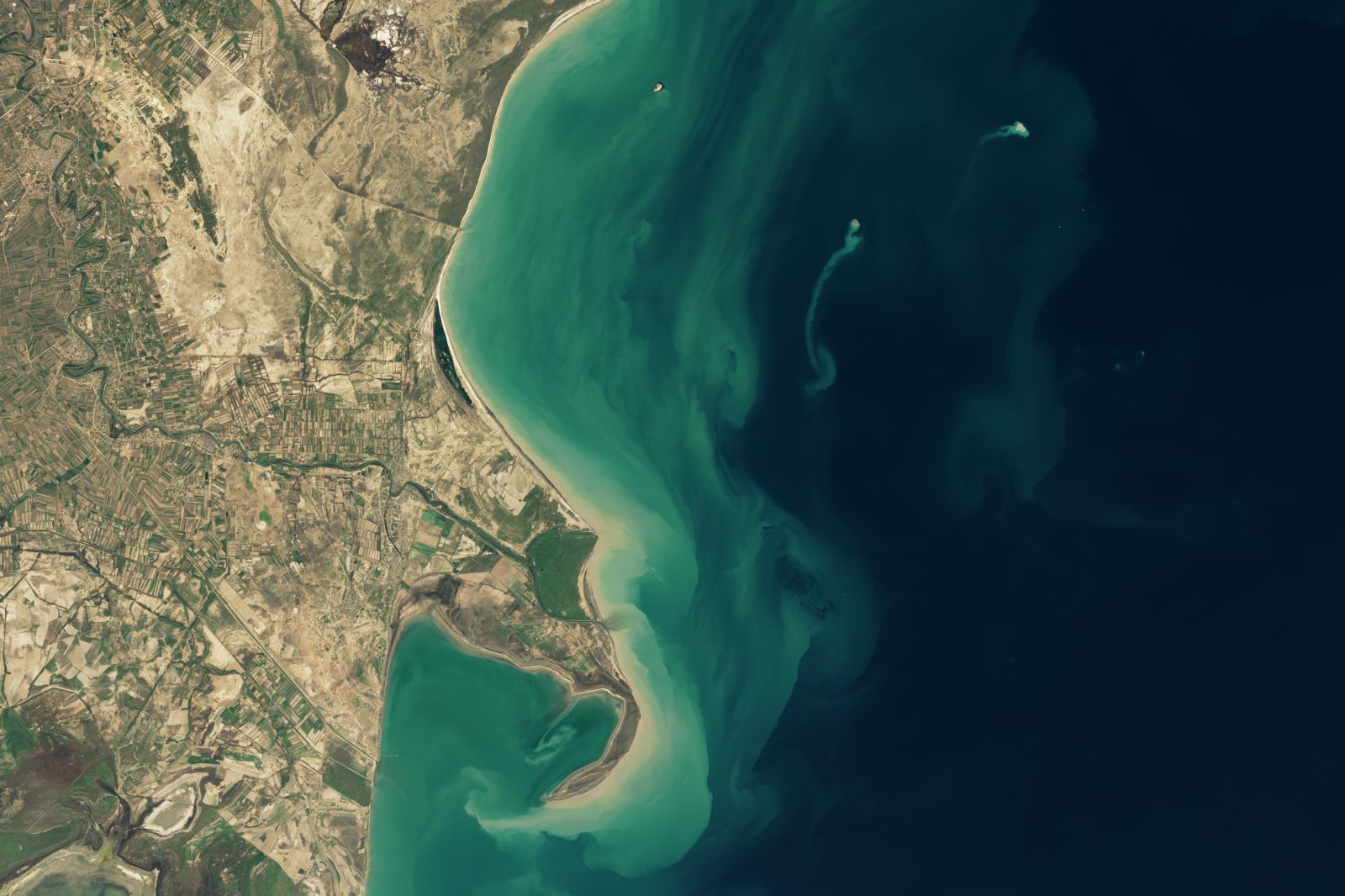This ghost island keeps appearing and disappearing: how is it possible? 🏝️
Published by Cédric,
Article author: Cédric DEPOND
Source: NASA Earth Observatory
Other Languages: FR, DE, ES, PT
Article author: Cédric DEPOND
Source: NASA Earth Observatory
Other Languages: FR, DE, ES, PT
Follow us on Google News (click on ☆)
About 15.5 miles (25 kilometers) off the coast of Azerbaijan, a temporary island recently made a comeback before fading back beneath the waves. NASA satellites captured this astonishing spectacle, revealing an island 1,312 feet (400 meters) wide that emerged in February 2023. But this appearance is just one episode among many in a series of cycles.

NASA image
The emergence of a temporary island
In February 2023, an unexpected island appeared about 15.5 miles (25 kilometers) off the coast of Azerbaijan. Landsat 8 and 9 satellites documented its formation, revealing a structure 1,312 feet (400 meters) wide. This island, named Chigil-Deniz, is the result of an eruption from the Kumani Bank mud volcano, a unique geological phenomenon.
From the moment it formed, the island began to disappear due to marine erosion. Recent images show that it has almost entirely been swallowed by the waters. This cycle of appearance and disappearance is not new: similar events have been recorded since 1861, with islands emerging and then vanishing within a few months.
The role of mud volcanoes
Mud volcanoes, like Kumani Bank, form when pressurized fluids rise to the surface, carrying sediments and gases. These eruptions can create temporary islands, but they are quickly destroyed by waves. Azerbaijan, located at the junction of the Arabian and Eurasian plates, is home to more than 300 of these geological structures.
These mud volcanoes are often accompanied by sediment plumes visible from space. Their activity, although less spectacular than that of traditional volcanoes, plays a key role in the region's geodynamics. Scientists are studying these phenomena to better understand their impact on the environment.
A phenomenon still poorly understood
Scientists are trying to understand the precise mechanisms behind these eruptions. Two hypotheses are proposed: the intense tectonic activity of the region or the spontaneous combustion of released gases. This research could shed light on similar phenomena observed on Mars, where comparable structures have been identified.
The study of these mud volcanoes could also reveal information about natural gas reserves in the region. The eruptions, although unpredictable, offer a unique window into deep geological processes.

NASA image
A window into Earth's dynamics
The ghost island of the Caspian Sea reminds us that the Earth is constantly evolving. These events, although spectacular, highlight the importance of studying geological processes to better understand our planet and its mysteries.
Satellites continue to monitor the region, capturing every detail of these ephemeral phenomena. These observations allow scientists to better anticipate future eruptions and enrich our knowledge of Earth's geology.
To go further: What is a mud volcano?
A mud volcano is a geological formation that ejects mud, gases, and water instead of lava. These structures form when pressurized fluids rise to the surface, pushing sediments and creating mounds or craters. Unlike traditional volcanoes, they are not linked to magmatic activity.
Mud volcanoes are often associated with tectonically active zones, such as plate boundaries. In Azerbaijan, for example, more than 300 mud volcanoes have been recorded. Their activity can vary, ranging from small muddy eruptions to spectacular explosions releasing flames and flammable gases.
These phenomena are studied for their role in releasing natural gases, such as methane. They also provide clues about deep geological processes, including fluid migration in sedimentary layers. Some scientists believe that similar structures could exist on Mars.
Although less destructive than classic volcanoes, mud volcanoes can have a significant local impact. Their eruptions can alter landscapes, create temporary islands, and influence surrounding ecosystems. Their ongoing study continues to reveal valuable information about our planet's dynamics.